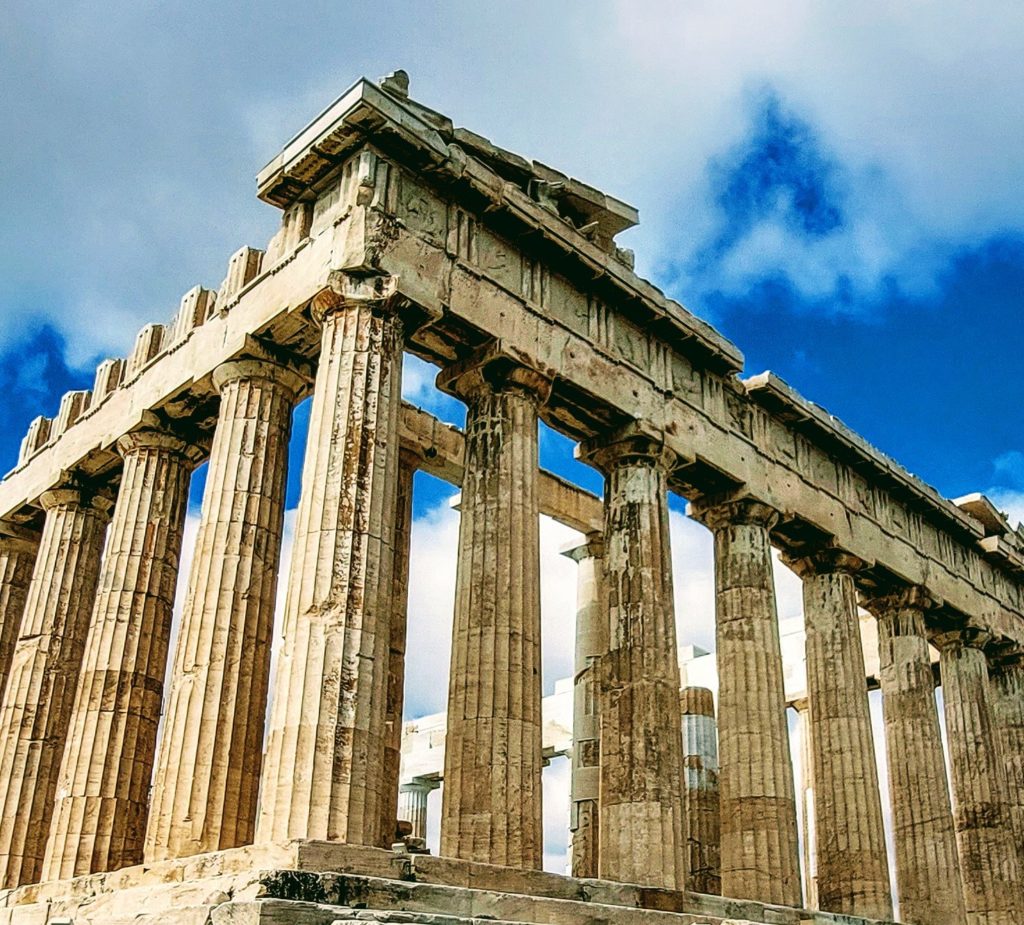
This post will be mostly photos taken Monday, my first full day in Athens, being a tourist, hiking from my apartment 3.5 kilometers to the bustling city center where history comes alive, as tour books may suggest.
My aim, however, especially on the Acropolis, was to remove the ubiquitous tourists themselves, the scaffolding and equipment in place for the ongoing renovations of the ancient site, the lighting fixtures for the evening shows, and any other visual intrusions that would mar a clear view of the magnificent, historic antiquities on display there for clutter-free photos.
Not an easy task.
But first let me tell you my revelation of the day.
The Acropolis is not an ancient building!
After seeing all the structures and ruins atop the prominent hill in central Athens, I didn’t see one building identified as the Acropolis, despite all the signs pointing up the hill saying, “To Acropolis.”
Later, as I was walking down the hill a bit puzzled by what I’d seen, or perhaps had not seen, I approached a tired-looking park attendant and asked if I might ask a question, knowing full well how likely it would reveal once more just how dumb a tourist can be.
But, hey! You never know till you ask, right?
I ventured forth bravely in my ignorance.
“Which one of those buildings is the Acropolis?”
The tour-worn woman was kind enough to explain without discernible disdain for the question that she may have answered already a thousand times, that the acropolis is in fact the large hill on which several buildings were built, including the Parthenon, the most prominent one. The acropolis is not a building at all!
In fact, I learned later, there is more than one acropolis and the one I stood atop is more appropriately named the Acropolis of Athens.
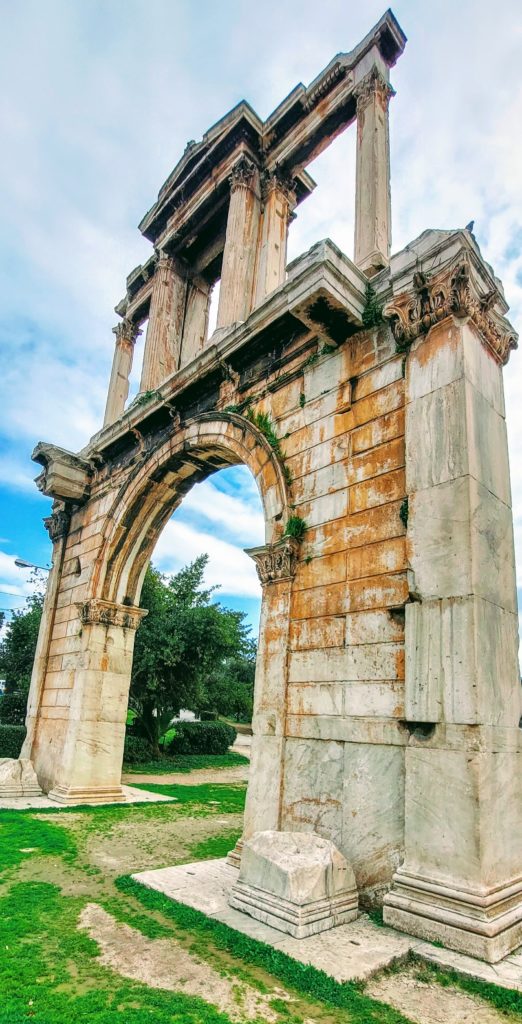
Before I got to the Acropolis of Athens, however, I stopped at the Greek Tomb of the Unknown Soldier, the Arch of Hadrian, and the National Garden of Greece, where I did not take any photos to present here. I came for history, not flowers and greenery. Sorry, all you nature lovers.
Hadrian was a Roman emperor in the First Century A.D. and later became a Greek citizen. However the arch itself has a fairly muddled history. Essentially, it was constructed in 131 or 132 A.D. to honor Hadrian’s contributions to the city on the occasion of his arrival and the dedication of a new complex of structures nearby including the Temple of Olympian Zeus.
The road beneath the arch connected the central city at the Acropolis of Athens, a little more than a 1000 feet away, with the new Temple of the Zeus on the eastern part of the city.
While the Temple was a major structure, it was dismantled over the years to use the building materials for other projects. While the road is long gone, 16 large pillars remain on the Temple of Zeus site.
The remains of Hadrian’s Arch now stand to the side of a busy city street. Only tourists now walk beneath the triumphal arch that scholars say was built in the style of Rome. The scholars aren’t certain who actually commissioned the structure. Nevertheless it’s a fine arch.
On Wednesday the forecast calls for rain so I may visit the Acropolis museum, which is supposed to be impressive. The Museum of Archaeology is also supposed to be worth seeing, and it’s much closer to the Gizi area (also spelled Gyzi), a largely residential area in Athens where I’m living. The weather likely will have a lot to do with which museum I decide to go to, if at all.
For the travel accountants, the Acropolis costs 10 euros (11.34 USD) to climb the hill to the structures; the Acropolis museum, located adjacent to the Acropolis, costs 5 euros (5.67 USD) to enter.
Greek Tomb of The Unknown Soldier
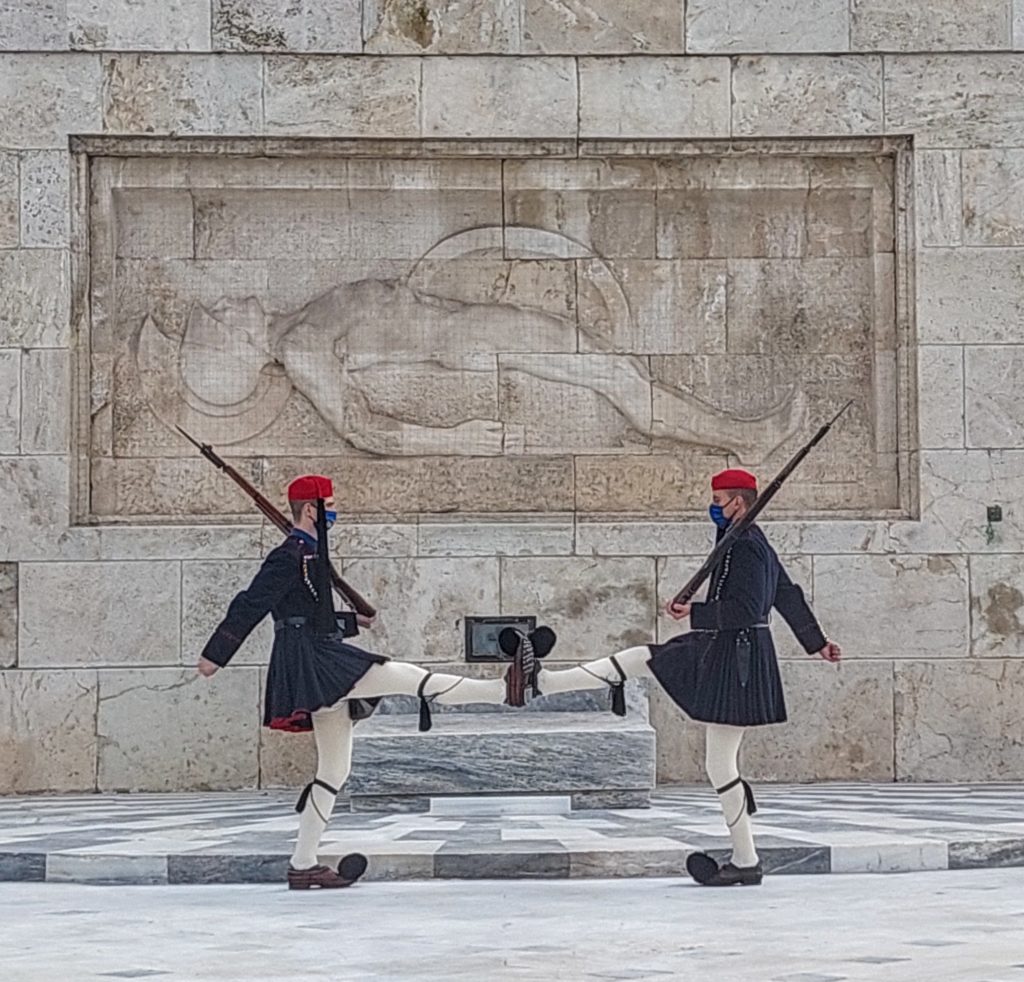
Photos From the Acropolis
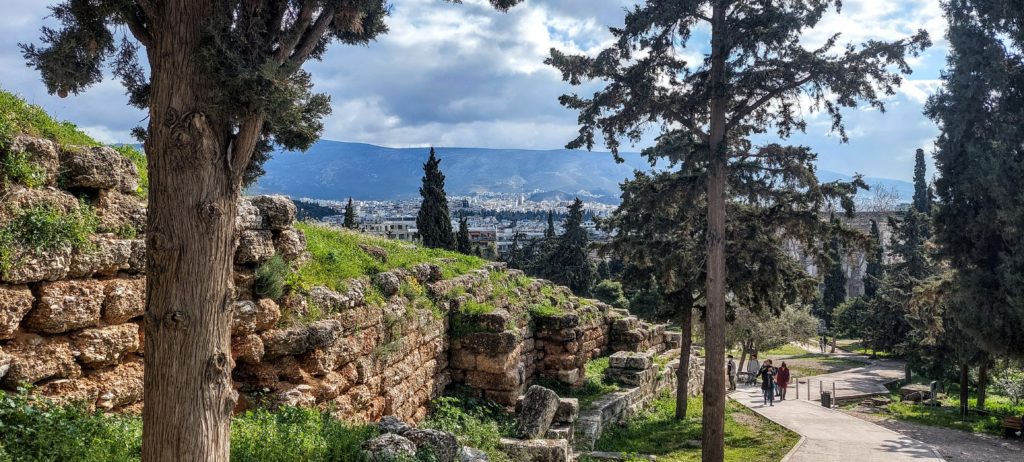
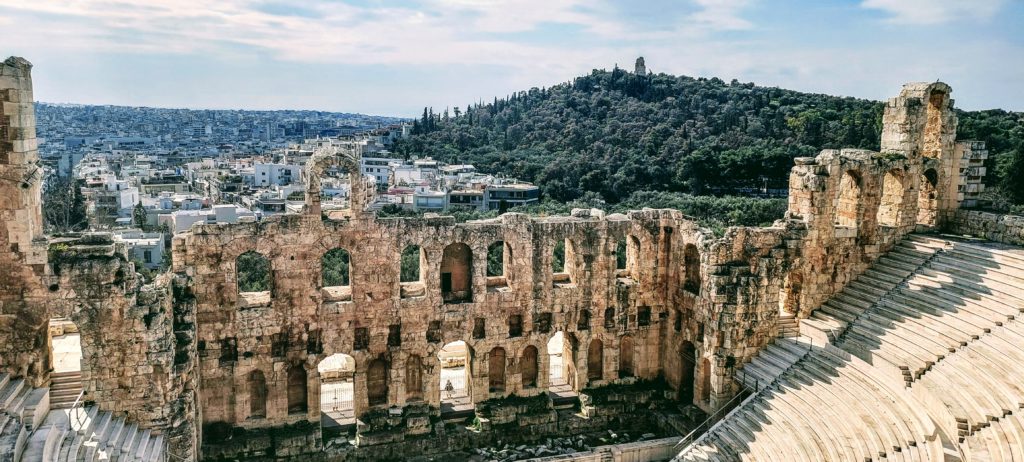
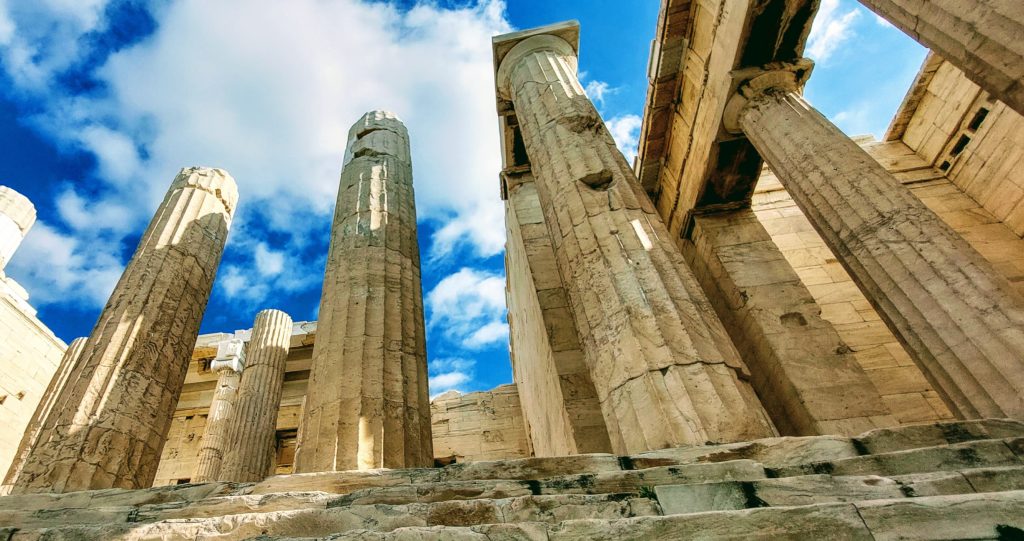

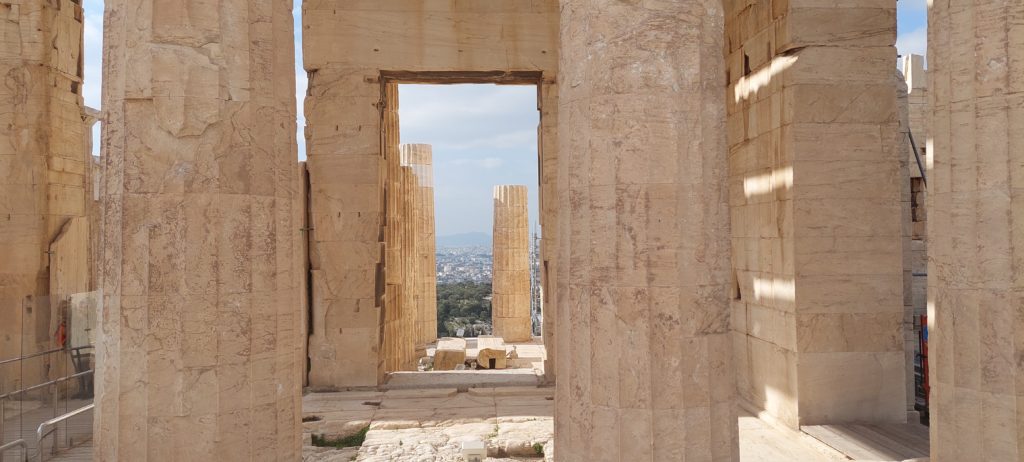
Finally, below, are a couple of shots of what I was trying to avoid in the photos I wanted.
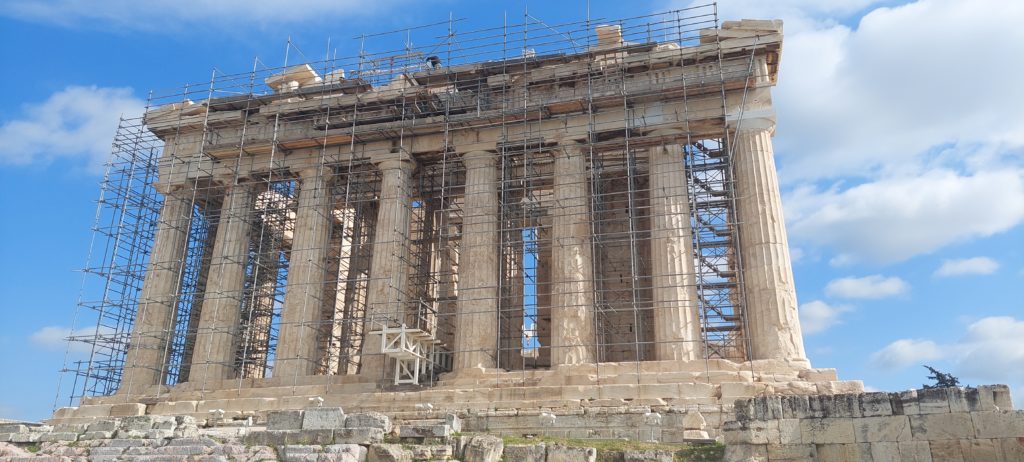
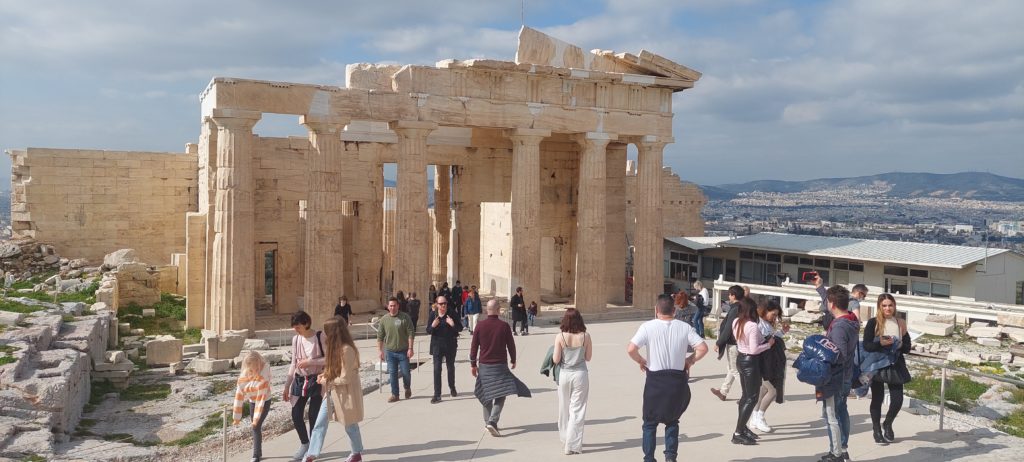
There is history in the air there!
I think you would enjoy those museums. My bet is they will have large artefacts with detailed ornamentation that were found on or near the Parthenon and other Acropolis buildings.
The Acropolis Museum has empty places for the missing caryatid (the ladies that hold up the Erechtheion at the Acropolis) and Parthenon Marbles – waiting for their return from the British Museum to their motherland. Greeks are very sentimental/emotional and this has been an ongoing battle for many decades.
Wow so this is a great trip during a pandemic! Learning lots from your journeys Dave! Thanks